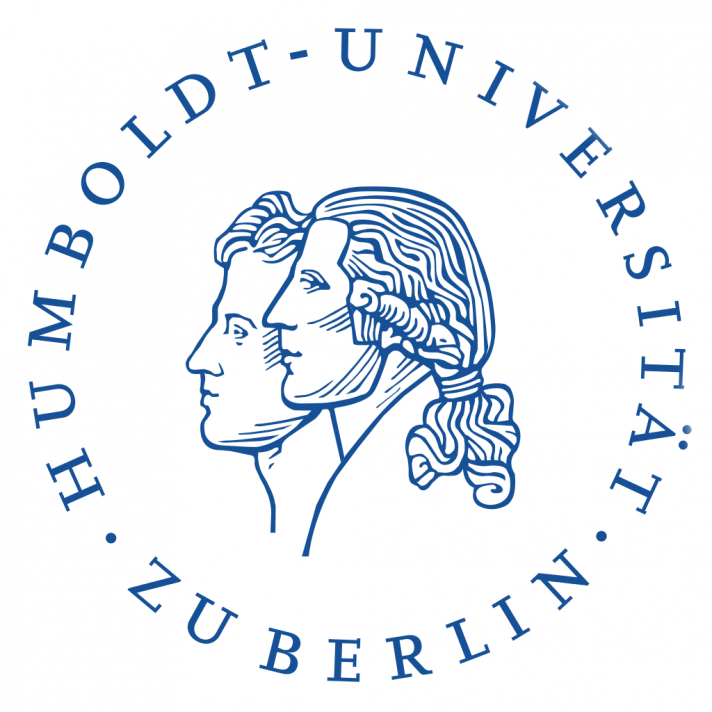For decades the term ‘source criticism’ has evoked associations linked to 19th German century historicism, the archive as the place to be, the written document as the source to trust, with Leopold von Ranke as the driving force behind the professionalisation of history.
But what if we add the prefix ‘digital’ to ’source criticism’? How does the principle of a systematic inquiry into the origins and creation of a source, relate to the ubiquitous availability of digitized or digital born online content? What are the consequences of the shift in scholarly practices from the careful study of a genuine document in an archive, to browsing, reading, cutting and pasting electronic copies in front of a computer screen?
From Luxemburg to Berlin
These were the key questions during a workshop on Digitale Quellenkritik that was held at the Humboldt University in Berlin on 23 June 2016 that I was privileged to attend. My interest in the subject is the consequence of my involvement in creating a teaching platform on Digital Source Criticism for historians at the Digital History Lab of the University of Luxemburg . This Lab is part of a new Luxembourg Centre for Contemporary and Digital History, led by prof. Andreas Fickers. Being intrigued by the question of how traditional methods of historical inquiry can be applied to digital content of media such as radio, television and cinema, he has contributed significantly to the debate on this topic. (Fickers, 2012, Fickers, 2016). Under his guidance and with my colleagues Anita Lucchesi and Max Kemman, and in the near future with 13 new PhD’s that are being recruited at this very moment (PRIDE), I participate in a think-tank on doing digital history in the industrial landscape of Belval. So my role as a ‘Luxemburgisch spotter’ of activities in this field was to venture into the former ‘biotope’ of Ranke – Berlin University was the place where his Prussian loyalty was rewarded with a professorship in 1825 – and sort out what his compatriots and successors have to say on this matter. But before I report on my findings, a short background on the meaning of the term ‘source criticism’.

External and Internal Source Criticism
Contemporary historians are experiencing the consolidation of the ‘digital turn’, but Ranke was responsible for an earlier radical change in scholarly practice in the 19th century: the so called ‘archival turn’. It compelled historians to get out of their comfortable armchairs, where they could pick and choose philosophical and historical topics and turn them into ‘universal histories’, with little attention for rigorous factchecking. Ranke encouraged a new generation of scholars to visit numerous archives, to scrutinize and compare documents, to trace back those who had created them, under which circumstances, at what moment, with what means, and for what purpose. This ‘external’ source criticism focuses on the creation, appearance and authenticity of a source. The next step, the so called ‘internal’ source criticism, focuses on the evidential value that can be attributed to a particular source: what does the source have to say about my topic?
Save the Ancillary Sciences!
The discussion in Berlin evolved around a mission paper published on the H-Soz-Kult website entitled:
It is an urgent call to academic policy makers to stop the gradual dismantling of university chairs in ancilliary historical skills such as paleography, epigraphy and numismatics. The authors regard them as essential for a sound understanding of pre-modern, modern, contemporary and digital born sources. Moreover, the authors question the investment in massive digitization and Open Access, while at the same time the curriculum fails in teaching students how to interpret this digital content. The concern of the authors, that German research is losing its competence and reputation to the American Anglo-Saxon academic community, is telling for the long term impact that budget cuts on ancilliary historical skills could have.
The Presentations
In the first contribution, Jakob Frohmann focused on this worrying development. He also warned that what had been proposed as a solution by policymakers, namely the integration of all ancillary skills training into one single Digital Humanities program, would lead to a deterioration of the distinctive value of each of these skills. Daniela Schulz from the university of Cologne offered her insight into the practice of creating critical digital editions. Interestingly enough, she pointed to the fact that the study of manuscripts is hardly never based on the original version, because they are too vulnerable. The problem of source criticism can therefore be regarded as a duplication of what already was a problem, now that the object of study is most often a digitized facsimile. By pointing to the banal fact that the brightness of the colours of a manuscript and even the readability of parts of the texts, vary depending on the type of screen on which a digital manuscript is read, she emphasized the necessity to question the relationship between the original object and its digital representation we see on screen. This supports the demand to develop a critical theory that was already been put forth by Christoph Flüeler. The new Digitaler Campus Bayern, presented by Julian Schulz, is the location where the competencies to realize such a digital edition or any kind of digital project, can be acquired. To teach students in the humanities and arts basic technological and statistical skills the virtual campus will consist of three components: 1. a digital work environment with server space, tools and data sets, 2. an IT-teaching platform providing learning and teaching resources for individual users and lecturers, and 3. an information/communication platform were blogs, assignments and results can be posted (link to slides). The only other contribution that besides addressing the appraisal of sources, also focused on the analysis of a corpus, was Sarah’s Oberbichler’s research on the representation of migration in two newspapers in South Tirol. This contribution from the university of Innsbruck was exemplary for the opportunity that Digital Humanities can offer when it comes to combining qualitative and quantitative approaches to documents. The corpora first were created on the basis of several word searches within the entire archive, and subsequently carefully read and annotated on the basis of a coding system. This ‘Argument Analysis’ approach differs from the classic computational linguistic text-mining method. The codes are attributed on the basis of a human-based understanding of the article, not by giving the software the instruction to search for specific words.
Benedikt Rothhagen from the Friedrich Schiller University in Jena pleaded for a stronger involvement of librarians and archivists in the creation of the academic curriculum. He stressed that research starts with carefully considered search and selection strategies. As the traditional humanities mindset tends to be individualistic, the ‘knowledge brokers’ who can be found in archives, museums and libraries, are often not included in the creation of research projects, while due to the digital turn, they have acquired a more central position in the research community. Alina Bothe’s contribution, focused on the epistemology of contemporary audiovisual witness accounts that can be consulted online. She has studied the interviews created by the Shoah Visual History Foundation for documenting the personal experiences of the survivors of the Holocaust. (Bothe, 2013) These are accessible at the Freie Universitat Berlin, to which she is affilitated. Part of this collection has been published on You Tube, creating a completely new spacial environment for the reconstruction, representation and reception of history. The nature of these sources, and our increasing reliance on the audiovisual heritage of the 20th century for historical research, call for a very specific kind of source criticism.
My own contribution (Stef Scagliola), echoed the need for specific training of academics to prepare them for digital scholarship. I presented five key competencies that have to be acquired, that cover the subsequent steps in the research process:
- understand how digitisation impacts on the value and character of a source
- understand the mechanisms for searching and selecting sources on the web
- understand what actually happens when digital tools are applied to process data
- be able to understand and create scholarly content that is a mix of text, images and sound
- be able to curate data in ways that enable re-use
An overall principle to which all the participants of the workshop seemed to be committed, and which was emphasized during the round table discussion, was the necessary move from ‘me and my publication’ to ‘our collaborative project’. This entails abiding to standards and teaching students how to communicate with other disciplines. It also means projects proposals that involve partners from other departments of the university and from the cultural heritage realm.
After a wrap up of the afternoon by Peter Haslinger from the Herder-Institut, it was time for the final event of the afternoon: the launch of the new version of Clio-online, by Michael Wildt (HU Berlin) and Wilfried Enderle (SUB Göttingen). This is the guide for digital resources for historians in Germany and German history. After that it was time for wonderful drinks and appetizers.



